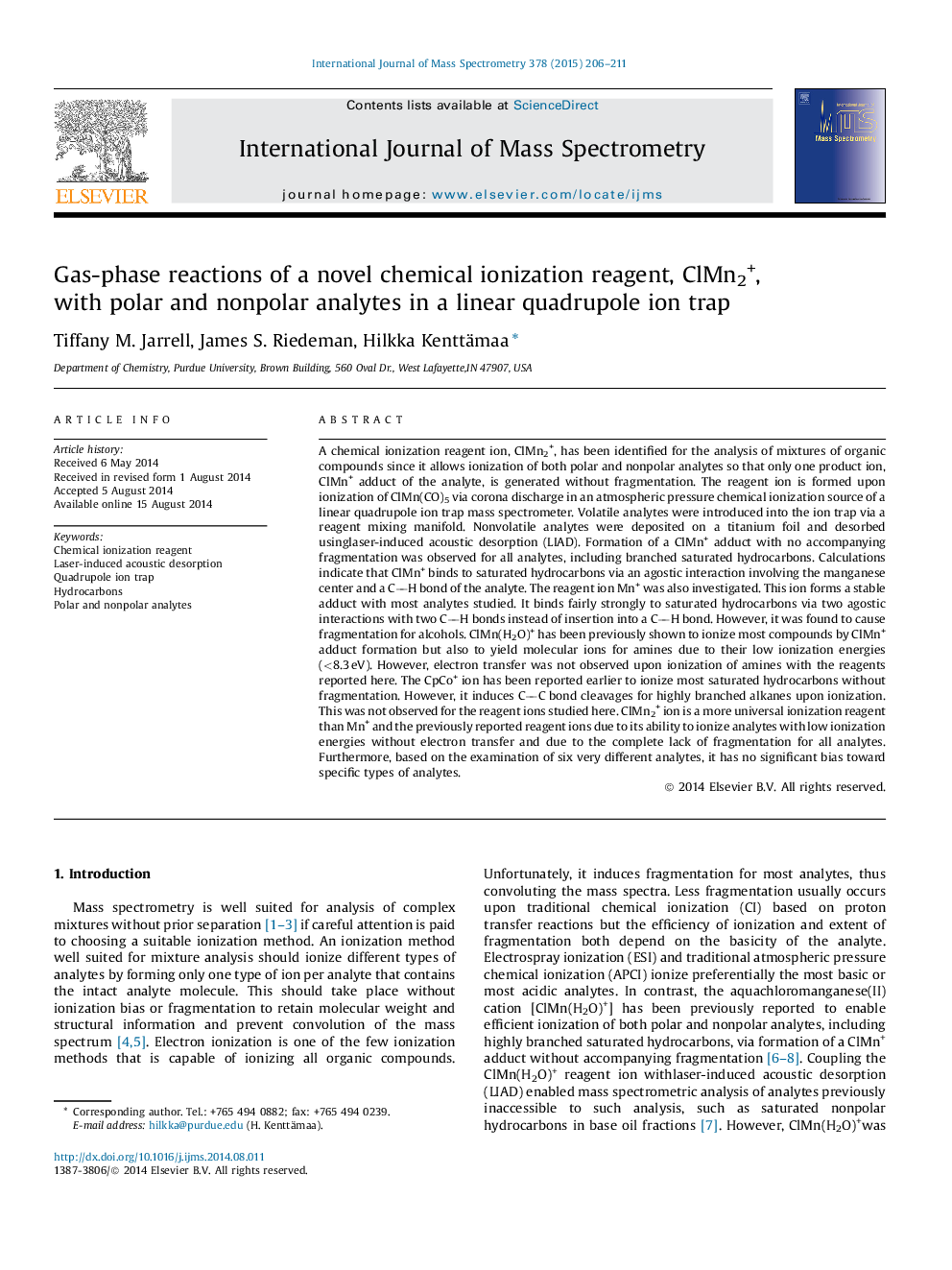| کد مقاله | کد نشریه | سال انتشار | مقاله انگلیسی | نسخه تمام متن |
|---|---|---|---|---|
| 1192099 | 1492250 | 2015 | 6 صفحه PDF | دانلود رایگان |

• ClMn2+ chemical ionization reagent ion efficiently ionizes various types of analytes, both polar and nonpolar, to exclusively form ClMn+ adduct ions.
• Above chemical ionization method appears to have no bias toward specific analytes.
• Above characteristics make this method especially suitable for mixture analysis.
A chemical ionization reagent ion, ClMn2+, has been identified for the analysis of mixtures of organic compounds since it allows ionization of both polar and nonpolar analytes so that only one product ion, ClMn+ adduct of the analyte, is generated without fragmentation. The reagent ion is formed upon ionization of ClMn(CO)5 via corona discharge in an atmospheric pressure chemical ionization source of a linear quadrupole ion trap mass spectrometer. Volatile analytes were introduced into the ion trap via a reagent mixing manifold. Nonvolatile analytes were deposited on a titanium foil and desorbed using laser-induced acoustic desorption (LIAD). Formation of a ClMn+ adduct with no accompanying fragmentation was observed for all analytes, including branched saturated hydrocarbons. Calculations indicate that ClMn+ binds to saturated hydrocarbons via an agostic interaction involving the manganese center and a CH bond of the analyte. The reagent ion Mn+ was also investigated. This ion forms a stable adduct with most analytes studied. It binds fairly strongly to saturated hydrocarbons via two agostic interactions with two CH bonds instead of insertion into a CH bond. However, it was found to cause fragmentation for alcohols. ClMn(H2O)+ has been previously shown to ionize most compounds by ClMn+ adduct formation but also to yield molecular ions for amines due to their low ionization energies (<8.3 eV). However, electron transfer was not observed upon ionization of amines with the reagents reported here. The CpCo+ ion has been reported earlier to ionize most saturated hydrocarbons without fragmentation. However, it induces CC bond cleavages for highly branched alkanes upon ionization. This was not observed for the reagent ions studied here. ClMn2+ ion is a more universal ionization reagent than Mn+ and the previously reported reagent ions due to its ability to ionize analytes with low ionization energies without electron transfer and due to the complete lack of fragmentation for all analytes. Furthermore, based on the examination of six very different analytes, it has no significant bias toward specific types of analytes.
Figure optionsDownload high-quality image (153 K)Download as PowerPoint slide
Journal: International Journal of Mass Spectrometry - Volume 378, 15 February 2015, Pages 206–211